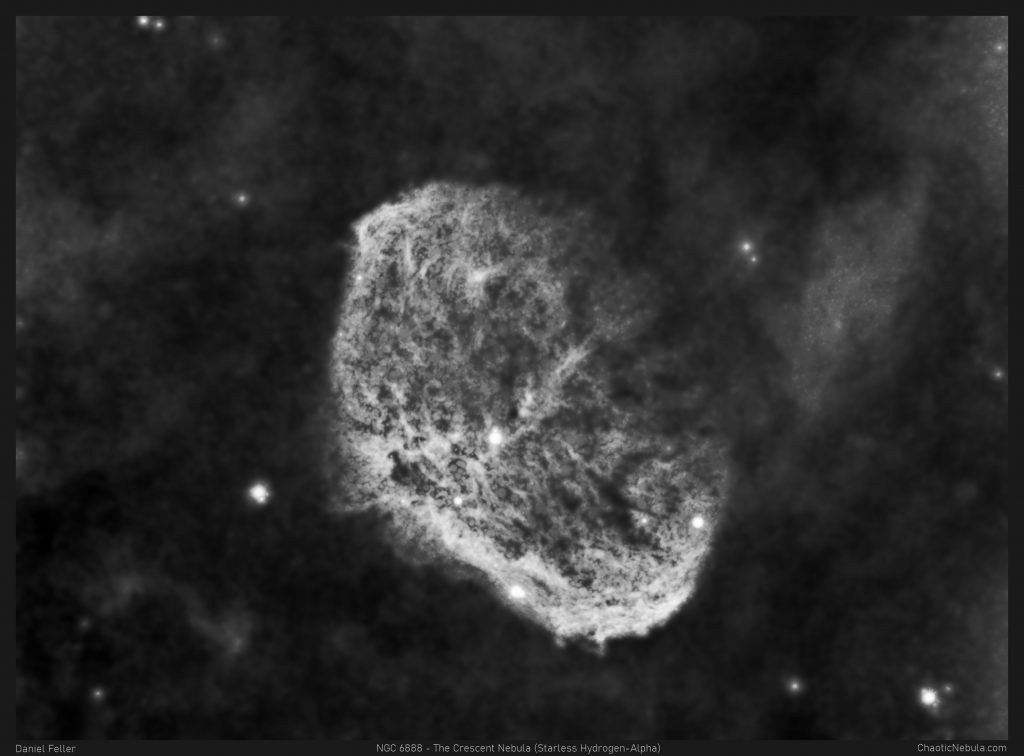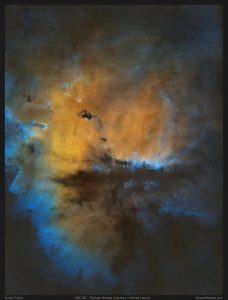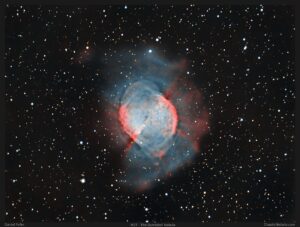NGC 6888, located in the constellation Cygnus, is an emission nebula. This nebula is lit by a central star within the nebula.
Sometime between 250,000 to 400,000 years ago, this star ejected a stellar shell when it ballooned to a red giant star. Since that time, the central star is nearing the end of it’s life and the stellar winds have greatly increased (now categorized as a Wolf-Rayet star) resulting in another stellar shell.
The two different stellar shells are colliding, creating one outward moving shockwave and one inward moving shockwave. This is why the image appears to have two distinct shells.
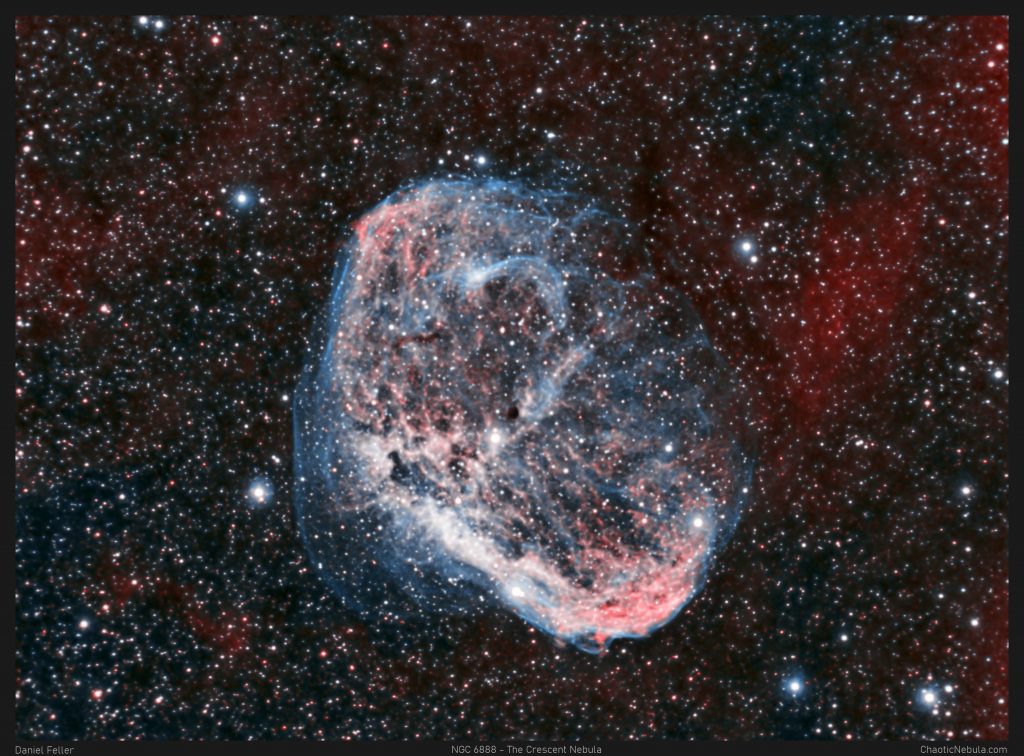
Imaging Details
- Processing Workflow: Narrowband
- Color Associations
- Red: Hydrogen-alpha
- Green: Oxygen-III
- Blue: Oxygen-III
- Hydrogen-alpha: 18*600 seconds
- Oxygen-III: 22*600 seconds
- Total Imaging Time: 6hrs 40 minutes
- Imaging Dates (3 nights):
- 8/10/2020
- 8/18/2020
- 8/28/2020
Narrowband Filters
If you examine the Crescent Nebula through the different narrowband filters, it becomes easier to see the different structures

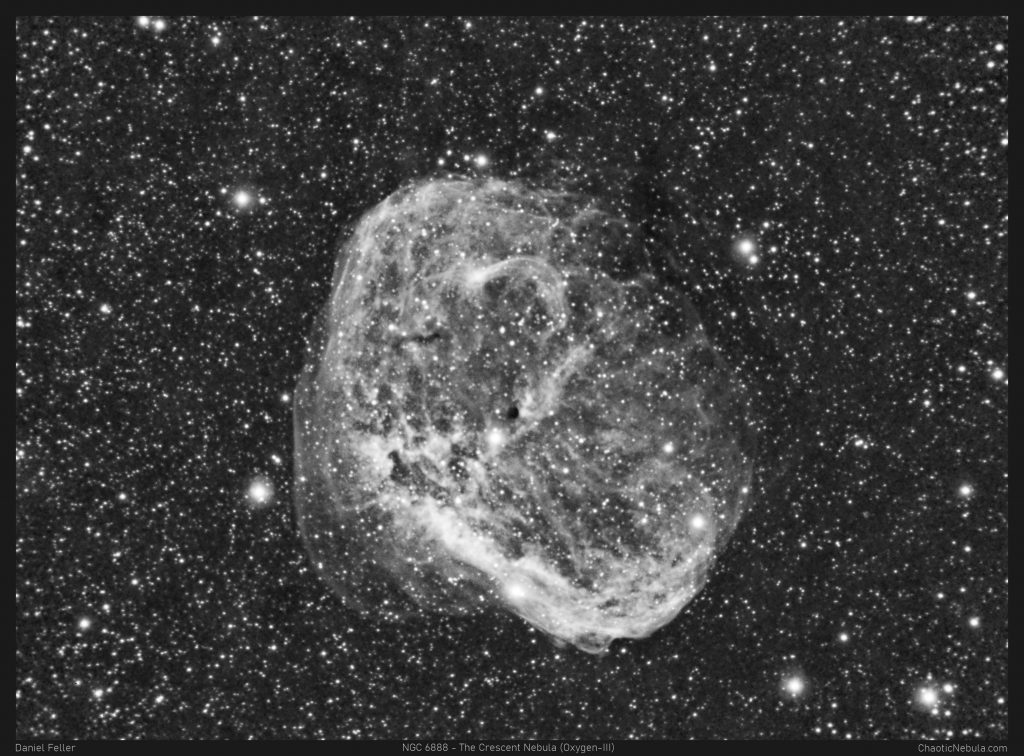
If we remove the stars from the the hydrogen-alpha image, it is easier to see all of the background hydrogen that adds the red clouds in the color image.

